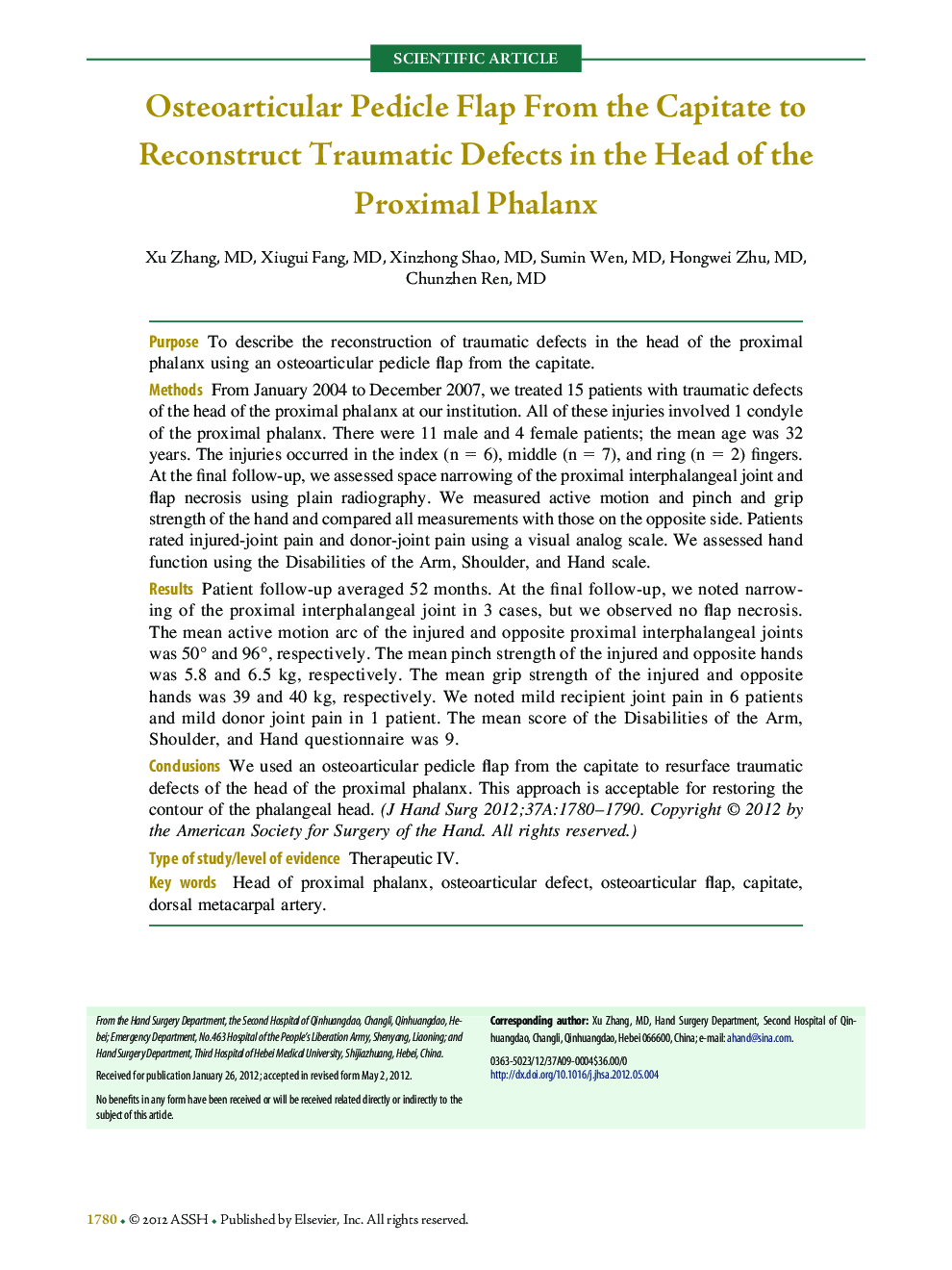| Article ID | Journal | Published Year | Pages | File Type |
|---|---|---|---|---|
| 4067287 | The Journal of Hand Surgery | 2012 | 11 Pages |
PurposeTo describe the reconstruction of traumatic defects in the head of the proximal phalanx using an osteoarticular pedicle flap from the capitate.MethodsFrom January 2004 to December 2007, we treated 15 patients with traumatic defects of the head of the proximal phalanx at our institution. All of these injuries involved 1 condyle of the proximal phalanx. There were 11 male and 4 female patients; the mean age was 32 years. The injuries occurred in the index (n = 6), middle (n = 7), and ring (n = 2) fingers. At the final follow-up, we assessed space narrowing of the proximal interphalangeal joint and flap necrosis using plain radiography. We measured active motion and pinch and grip strength of the hand and compared all measurements with those on the opposite side. Patients rated injured-joint pain and donor-joint pain using a visual analog scale. We assessed hand function using the Disabilities of the Arm, Shoulder, and Hand scale.ResultsPatient follow-up averaged 52 months. At the final follow-up, we noted narrowing of the proximal interphalangeal joint in 3 cases, but we observed no flap necrosis. The mean active motion arc of the injured and opposite proximal interphalangeal joints was 50° and 96°, respectively. The mean pinch strength of the injured and opposite hands was 5.8 and 6.5 kg, respectively. The mean grip strength of the injured and opposite hands was 39 and 40 kg, respectively. We noted mild recipient joint pain in 6 patients and mild donor joint pain in 1 patient. The mean score of the Disabilities of the Arm, Shoulder, and Hand questionnaire was 9.ConclusionsWe used an osteoarticular pedicle flap from the capitate to resurface traumatic defects of the head of the proximal phalanx. This approach is acceptable for restoring the contour of the phalangeal head.Type of study/level of evidenceTherapeutic IV.
